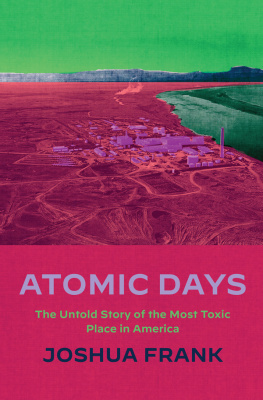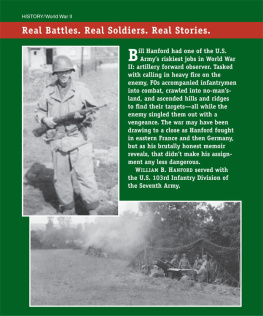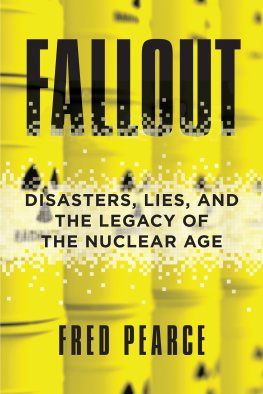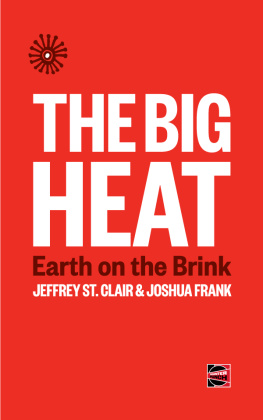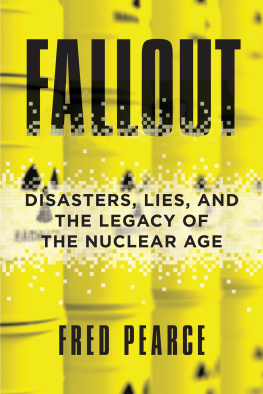Contents
Landmarks
PRAISE FOR ATOMIC DAYS
The Hanford site haunts the future of the Columbia River basin, its land, people, plants, and animals. Its a nuclear crime scene that once made atomic weaponry. Joshua Frank dissects that historical crime scene, tracing it back to the colonization of this land while also pointing to the future crimes that may have been unleashed by perpetual radioactive pollutiona silent killer that cannot be seen or smelled and takes thousands of lifetimes to fully neutralize. Frank issues an urgent call to action. NICK ESTES (Lakota), author of Our History Is the Future: Standing Rock Versus the Dakota Access Pipeline, and the Long Tradition of Indigenous Resistance
Joshua Franks Atomic Days is a brilliantly written, explosive expos of the most toxic site in the Western Hemisphere and most expensive environmental cleanup in world history. He has given us a terrifying look at the radioactive nuclear materials produced at Hanford for four decades, the environmental catastrophe left behind, and the disastrous cleanup efforts that generate huge profits for companies like Bechtel despite lies, fraud, and deadly accidents that only generate more corporate profits. But Frank also lifts up the courageous actions of whistleblowers, community watchdogs, and Indigenous leaders who can lead the way out of this morass. Read the book and take action to end the nuclear insanity. MEDEA BENJAMIN, cofounder of CODEPINK
With the environment at a tipping point, Atomic Days is a vital contribution to the urgent conversation about proposed solutions and the calamitous risks they carry. ABBY MARTIN, creator of The Empire Files
Nuclear powers significant carbon footprint is generated by carbon-intensive uranium mining. And what is overlooked by nuclear power boosters is the neocolonial impact of mining and refining nuclear fuel on Indigenous communities.... All of this makes reading Joshua Franks Atomic Days more crucial than ever. JACQUELINE KEELER, author of Standoff: Standing Rock, the Bundy Movement, and the American Story of Sacred Lands
Joshua Frank takes us on a dangerous ride through Hanford, our most toxic site, where sewage waste from plutonium generation is actively chewing away at storage units full of the most poisonous stew on Earth. Frank peels back the layers of government secrecy that engulf the cleanup, the manipulations of the unions, the utter waste of cleanup contracts, and the Chernobyl-like disaster that awaits us all. Atomic Days is a crucial, timely book. DOUG PEACOCK, author of Was It Worth It?
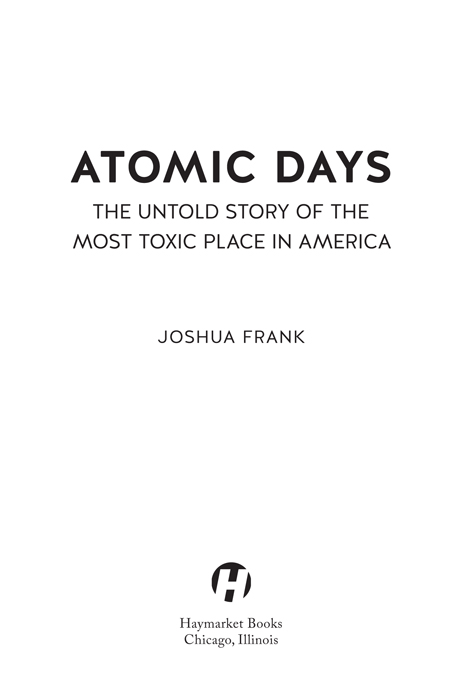
2022 Joshua Frank
Published in 2022 by
Haymarket Books
P.O. Box 180165
Chicago, IL 60618
773-583-7884
www.haymarketbooks.org
ISBN EPUB: 978-1-64259-863-6
Distributed to the trade in the US through Consortium Book Sales and Distribution (www.cbsd.com) and internationally through Ingram Publisher Services International (www.ingramcontent.com).
This book was published with the generous support of Lannan Foundation and Wallace Action Fund.
Special discounts are available for bulk purchases by organizations and institutions. Please call 773-583-7884 or email for more information.
Cover design by Abby Weintraub.
Illustrations by Becky Grant.
Interior photos copyright Mark Ruwedel, 19921994.
Library of Congress Cataloging-in-Publication data is available.

Hanford is located on Native grounds, the ancestral home of the Cayuse, Umatilla, Walla Walla, Yakama, Nez Perce, and Palouse peoples. We pay our respects to their elders, past and present, and acknowledge the ways that we have benefited from, and continue to benefit from, the ongoing theft of these lands and erasure of their cultures, voices, and lives.
This is their land, and this book is dedicated to their struggle.
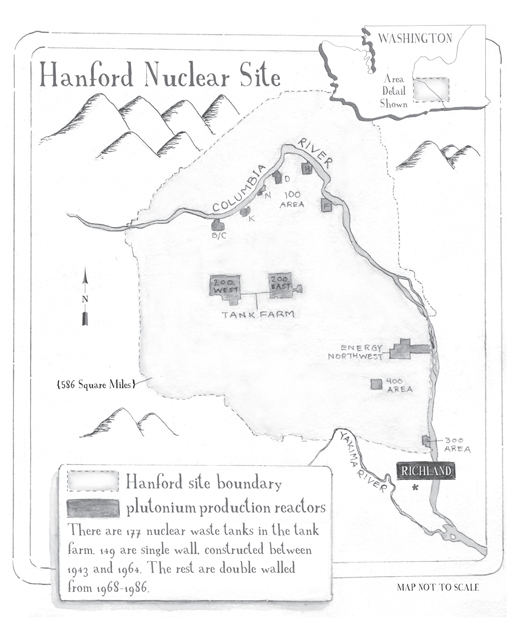
Illustrated map by Becky Grant.
WHY HANFORD?
A PROLOGUE
If youre like any number of people Ive talked to over the last few years, you arent really sure what Hanford is all about. Maybe you havent even heard of the place; I certainly wouldnt blame you. It is, after all, off the beaten path. The Hanford Nuclear Site is located in eastern Washington State. Its far from Seattle, three hours to the Idaho border, on the banks of the Columbia River, and a couple of hundred miles upstream from Portland, Oregon.
I wont inundate you with all the details just yet; well get to all of that later. But heres a modest primer: Hanford was home to the US governments gargantuan plutonium operation. The site churned out nearly all of the radioactive fuel that was used in the countrys nuclear arsenal. Like a ceaseless conveyer belt, Hanford generated plutonium for nearly four long decades, reaching maximum production during the height of the Cold War. Now, however, Hanford no longer produces plutonium. Instead, its a sprawling wasteland of radioactive and chemical sewage, a landmass three times larger than Lake Tahoe. Its also the costliest environmental remediation project the world has ever seen and, arguably, the most contaminated place on the entire planet.
So, why, if this is all true, which it is, have you not heard much about this dismal atomic graveyard? Its hard not to think that the lack of awareness is intentional. How else to explain its obscurity? Youve probably heard of Three Mile Island, Fukushima, and Chernobyl. Why not Hanford? Outside of the Pacific Northwest, youre not likely to read much about these wrecked lands, nor are you likely to catch any breaking news about what the hell is going on there. Not only is the site laced with huge amounts of radioactive gunk, but all that waste is also a ticking time bomb that could erupt at any given moment, creating a nuclear Chernobyl-like explosion, resulting in a singular tragedy that would be unlike anything the United States has ever experienced. Its a real and frightening possibility that I, for one, would rather not fathom.
I first heard of Hanford after I graduated from college in the early 2000s, while working for a nonprofit environmental group. One summer, I was tasked with the job of hiking up hidden, jagged canyons to survey the tributaries of Oregons North Fork John Day River in search of salmon habitat. Hanford was just two hours north of where I bunked up for those few weeks in a small Forest Service cabin. Around the campfire, there was often talk that Hanford was a tough, toxic place. A couple of the crew members had even worked there in their younger years. Dont bother with it, I remember one old-timer warning me, I know people who died from working at Hanford. Its not worth the trouble. This guy also hid piles of money under his mattress, so I wasnt sure what to make of his alarmism. That was the extent of my knowledge back then. I knew Hanford was in bad shape, but didnt understand how it got that way or why it wasnt getting any better. Years later, while in graduate school, I read the definitive book on Hanford,

